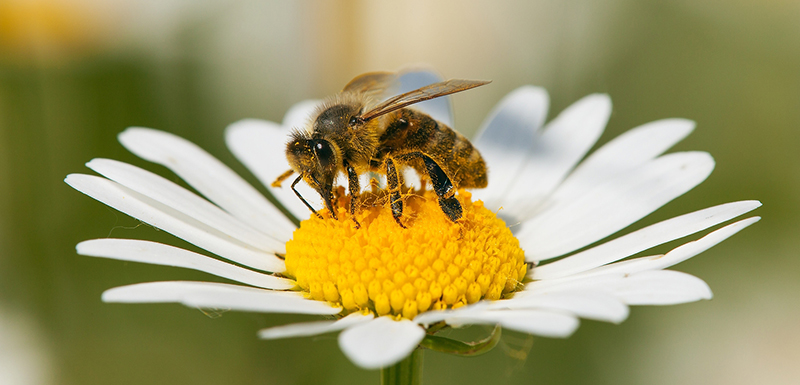Honey Bees
Honey bees are social insects and live as colonies in hives, with mature colonies of 20,000 to 80,000 individuals. A typical colony consists of infertile females known as workers, males known as drones, and a queen.
During the winter, the entire population lays dormant. There is only one egg-laying queen in the hive and she mates only once. She can lay as many as 1,500 to 2,000 eggs per day and may live as long as 5 years.

